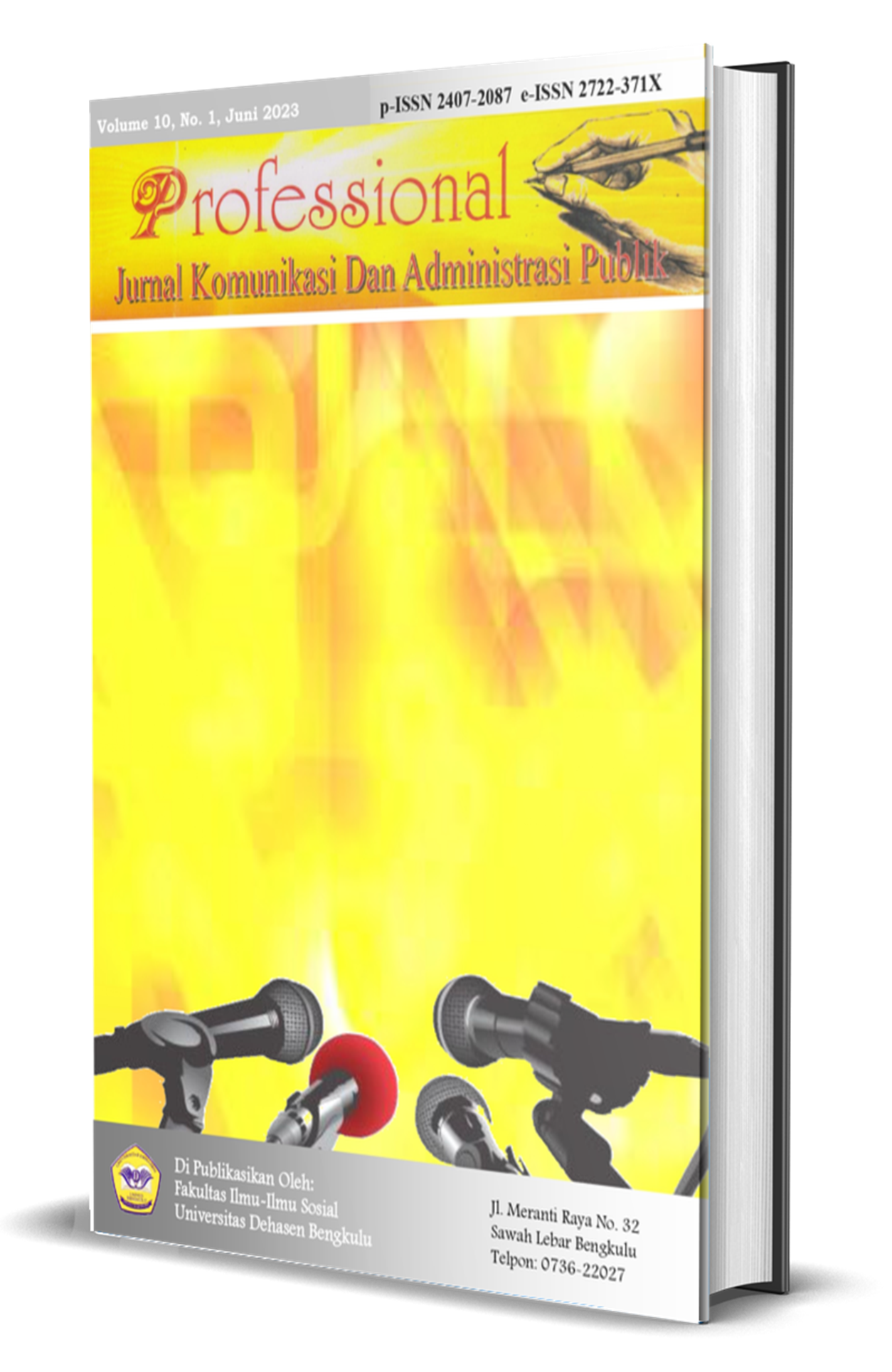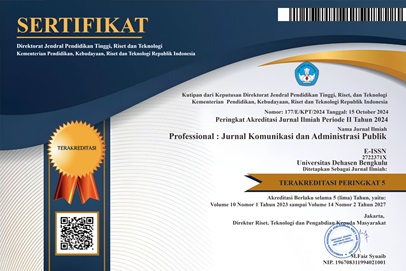Analisis Dramaturgi Dalam Film Dear David
Abstract
Film is a medium of learning for the audience that is not only an entertainment, it can also convey direct messages through images, dialog and plays. Netflix has become one of the global streaming platforms that can be accessed in Indonesia since 2016. Dear David is a Netflix original movie in the genre of romantic fantasy drama that airs in 2023 directed by Lucky Kuswandi. The movie Dear David received a lot of debate, because this movie contains sexual fantasies in women. This research aims to find out how the dramaturgical analysis in the movie Dear David. The method used is a qualitative approach using Charles Sanders Pierce's semiotic analysis technique through three stages, namely representamen, object and interpretation. Each scene of the film illustrates that there is dramaturgy in the film Dear David through several scenes, namely heterosexuality, women are free to choose how to enjoy their freedom according to their respective tastes and styles. Femenism is that women have power that is arbitrary towards others and self-acceptance is a form of being able to accept their identity and respect others. The results of this study show that the dramaturgy in the film Dear David is depicted by the main character Laras that the story of the film Dear David shows the existence of a front stage showing her as an outstanding high school student and a back stage as a child with heterosexual sexual fantasies as evidenced by having a privacy fantasy blog. Overall, this movie provides an overview of the dramaturgical approach not what is done, but the reasons for how it can be done.
Downloads
Copyright (c) 2024 Intan Anggriani, Vethy Octaviani, Anis Endang Sri Murwati

This work is licensed under a Creative Commons Attribution-ShareAlike 4.0 International License.





